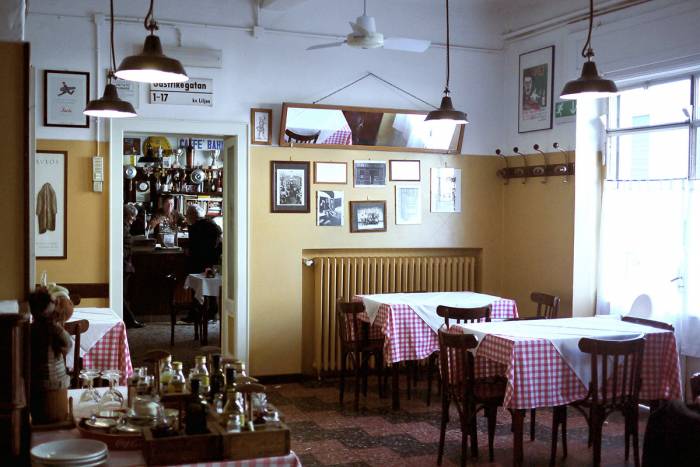To mark the Milano Marathon, enlivening the city’s streets on Sunday, 2 April 2017, we give some hints for visitors in town for the occasion, perhaps accompanying the runners. Here you will find insider tips, ideas and advice on ways to discover the "Lombard capital" in three days. If you’re unfamiliar with the Milano Marathon, you should remember the race follows a circular course, with the start and finish line in Corso Venezia. The route touches on various symbols of the city, from the Duomo to the Sforza Castle, the new Porta Nuova district and Portello park. Enjoy exploring the city!
Until a few years ago people from Rome in Milan on business loved to quip: “The best thing about Milan? The train back to Rome!”. Their Milanese friends would smile wryly, shrug and roll out the routine defence, praising (in order) Milan’s efficient public transport, the city’s cosmopolitan air during the Salone del Mobile or Fashion Week, and the discreet charm of certain views of Milan, though they had difficulty remembering which they were. Then there were the city’s canals designed by Leonardo da Vinci, “which would make the city look just like Amsterdam, if they hadn’t been covered over”. At which point they would pack their bags and leave. Because Milan was beautiful, true, but it hardly compared with a weekend by the sea, in the mountains or in some European capital.
All this was still true just a few years ago, say until Expo 2015, if we want to fix a date. Then things changed. The city began to preen itself and attract admirers. Now, if not exactly beautiful, it is certainly highly attractive. Tourists, especially from abroad, realise that a few days in Milan can be so much more than a stopover to fill up on Prada/Armani/Gucci and snack on a panzerotto from Luini. It’s a chance to discover a great European city, one that has been an imperial residence, the capital of a state (a duchy), and even of the Kingdom of Italy (under Napoleon). Today it is a living example of what the world means by Italian style and creativity, and a lot more.
Low cost flights that were meant to wing the Milanese abroad now unload droves of tourists who flock to Piazza Duomo. The Milanese themselves are as surprised as anyone. And there’s another miracle.
Milan has outstripped Rome for the number of visitors. So once you’re here, what’s new and different about the town? Here are our pointers for
spending three days in the city, leaving the beaten track and seeking to make the most of Milan. And if you love the works of our time, in which Milan is particularly rich,
here you will find
10 unmissable places for lovers of contemporary art that we recommend (it's in Italian, but you'll understand names and addresses).
Certainly, the Last Supper is worth seeing once in a lifetime, even Dan Brown says so. If you plan to visit Milan, be sure to book well in advance and secure your 15 minutes of admiration, between a Japanese miming ooh and ah in ecstatic silence and, if you’re unlucky, a Chinese tourist expressing himself out loud while clicking a noisy selfie. But just a step away from the cathedral is a church that looks small but is not. You’ll find it in the central and almost chaotic Via Torino, an affordable shopping street frequented by the young. It’s screened behind iron railings and easy to miss unless you go looking for it. It has a complicated name, Santa Maria presso San Satiro, and the interior is made to seem bigger by Bramante’s illusionistic design of the chancel. So the space looks larger than it actually is. San Satiro is one of the “Aperti per Voi”, kept open by the Touring Club’s volunteers. It is beautiful even if you see it from the back on Via Mazzini.
Admission is free, as it is to another little-known jewel of the city: San Maurizio al Monastero Maggiore, in Corso Magenta. The two churches are not far apart. You can go from one to the other, passing through the side streets off Piazza San Sepolcro, the Braidense library and Piazza della Borsa (where Cattelan's sculpture gives the Stock Exchange the finger), and then down Via Meravigli. The walk will give you a good idea of the soul of old Milan, which is not to be found only in the Sforza Castle. Once you have seen San Maurizio, stroll a little further and have a look at Sant'Ambrogio (full name: the Roman Minor Abbatial Collegiate Provostal Basilica of Sant’Ambrogio). Here you can breathe in the spirit of Milan’s history.
 Afternoon
Afternoon
Visiting a city on a weekday has the undeniable advantage of letting you relax and see how the locals live, while getting out of the tourist rut. Just outside the ring of the Navigli canals that encircle Milan, marking the boundary of the inner city, you come to the Paolo Sarpi district, perhaps the best place to enjoy the city’s cosmopolitan spirit. This is the Chinese quarter, true. And there’s not much to see, equally true. But it adjoins the Parco Sempione and is close to the nightlife of Corso Como and Corso Garibaldi. And now that the Feltrinelli Foundation has opened, designed by Herzog & de Meuron (see photo) it has gained an architectural attraction.
Since it has become a pedestrian mall, the central street of Milan’s Chinatown, Via Paolo Sarpi, is a pleasant place to stroll and very tempting for lovers of exotic food. There are lots of shops where you can stop and sample dim sum as good as any in Beijing. Drop in at the Ravioleria Sarpi (Via Paolo Sarpi 27). This tiny shop does wonderful dim sum takeaways. But the whole area gives you a charming idea of what a great European city is like. Cosmopolitans should also wander through the nineteenth-century streets around Porta Venezia (where the Milano Marathon starts). For years this was a stamping ground for the Ethiopian and Eritrean communities, with their spicy restaurants and shadowy cafés. Today it is also the epicentre of the city’s largest gay community, with some of their favourite haunts dotted around Via Lecco and Via Melzo.
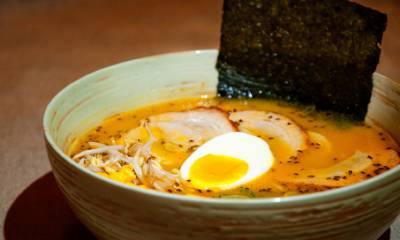 Evening
Evening
Needless to say, you can breathe this cosmopolitan atmosphere at table. Milan has a steadily growing range of ethnic eateries, where you can try dishes you will rarely find in any other part of Italy. According to the experts of the Fine Dining Lovers’ website, they include
a pair of unmissable Japanese restaurants offering a lot more than sushi. Try the okonomiyaki (an omelette pancake from Osaka) served by
Maido (Via Savona 15 and Via Cagnola 4;
www.maido-milano.it). Or
Nozomi (no sushi), which offers authentic home cooking (Via Piero Calvi 2;
www.nozomi.milano.it). And the excellent ramen at
Ryukishin (Via Ariberto 1;
www.ryukishin.it).
While Japanese cuisine is fashionable everywhere,
Peruvian is new. Milan has some 40,000 immigrants from Peru and they have a lot of restaurants in the Via Padova area. If you want to sample an outstanding meal (among the world’s best, swear the Peruvian magazines), try Pacifico, Via della Moscova 29 (
wearepacifico.it). Inkanto (at Via Emilio Gola 4) is more relaxed and serves a great ceviche. But if you
want Mexican, then no problem: Bésame Mucho moved to Porta Nuova (Piazza Alvar Aalto) straight from the Expo pavilions. It’s an excellent place to take you beyond the old idea of Tex-Mex. Still got room for a little more? Well, to complete the gastronomic map, you can sample many other specialities:
Uzbek (Uzbek, Via Carlo Farini 38),
Vietnamese (Vietnam Mon Amour, Via Torquato Taramelli 67),
Argentine (El Gaucho, Via Carlo Adda 11, owned by Javier Zanetti),
Swedish (Bjork, Via Panfilo Castaldi 20),
Jewish (Denzel, Via Washington 9) and
Eritrean (the excellent Asmara in Via Lazzaro Palazzi). Even a
Nepalese restaurant opened a few months ago: Achar (Via Piero della Francesca 13).
For a simple stroll this is not going to be cheap. The ticket will set you back €12, but then the view is really worth it. Because once you're in Milan you will naturally want to visit Piazza Duomo. And to avoid the queues, or perhaps because you've seen it before with your elderly aunt, here’s a novelty that enables you to enjoy a different panorama over the spires and the city centre. A walk on the
rooftop of the Galleria Vittorio Emanuele to view a beautiful part of the city from an objectively unusual standpoint (
www.highlinegalleria.com).
If you haven’t been to Milan for some time, then try visiting the area, not clearly defined, lying between Corso Como and Isola, just beyond Garibaldi railway station. Until a few years ago this was a big vacant lot where circuses sometimes pitched their big tops. Now it’s called Piazza Gae Aulenti and is dotted with skyscrapers that make Milan look more like the vertical city it always yearned to be. Then there are shops, an auditorium, and a small park is now being laid out (the Milano Marathon passes close by). Near it is the Bosco Verticale, an award-winning apartment building that evokes the hanging gardens of Babylon.
A little further on is the Isola quarter, its name meaning “island”. It really was an island once (being surrounded by rivers, the Seveso, and canals). It used to be rather notorious, but now it is the height of chic. On Saturday afternoons, in Via Borsieri and Via Volturno, you will come across a street market. Nothing special, mind, but it does give you an idea of life in the city. And all around, sprouting like mushrooms, are restaurants, fashionable cafés, independent bookstores and shops where you can browse to your heart’s content. If after half an hour spent window shopping you feel like saying: “Is that all?”, then you’ve spent too much time in New York.
How do the Milanese spend their evenings? Good question. Doing anything and everything, much as elsewhere. But Milan offers a range of cultural attractions unrivalled by any other Italian city.
Cinemas, theatres, concerts, sports events: you’ll find some of whatever you fancy in Milan and often at its finest. So if you feel like going to the theatre, see what’s on at the
Manifatture Teatrali at Palazzo Litta (
www.mtmteatro.it), with programmes ranging from the experimental to the classics. Or the Teatro Franco Parenti (
www.teatrofrancoparenti.it), where there is always lots to see and do since the opening of the Bagni Misteriosi (see photo below). And then, of course, the Piccolo Teatro is renowned (
www.piccoloteatro.org). If you love theatre can you really miss it?

If you’re eager to see
movies hard to find anywhere else, find out what’s showing at the historic Cinema Mexico (Via Savona 57;
www.cinemamexico.it). Or the little Cinema Centrale (
www.multisalacentrale.it) on Via Torino, a multiplex with two screens, each auditorium being not much bigger than a sitting room. Or at the Cinema Beltrade (
bandhi.it/bah/beltrade): almost in the outer city (but easily reached by tram or subway, Linea 1, get off at Pasteur). Completely independent, it goes in for quality films with rich and varied programmes and excellent documentaries.
Die-hard movie fans should make a point of visiting Spazio Oberdan, the cinema of Milan’s film library (Piazza Oberdan;
oberdan.cinetecamilano.it), with its themed screenings, or the interactive cinema museum (Viale Fulvio Testi 121,
mic.cinetecanilano.it).
For concerts, you will be spoiled for choice. But if you love great jazz, pop in to Blue Note (
www.bluenotemilano.com) on Via Borsieri in the Isola district.
 SUNDAY
SUNDAY
Quite honestly, compared to most of Italy, the breakfast croissants at the average café in Milan are barely worth the trouble. Usually defrosted in a microwave, they are no better than you would get on the motorway. And if the café gives off a certain old-time bakery fragrance, it’s because along with these frozen pastries the wholesalers have provided an aroma diffuser.
Luckily there are still places where
coffee and croissants for breakfast make a great start to the day. Unless you’re intent on watching your favourite runner start in the marathon, you can relax, perhaps not with
a trendy brunch but in the time-honoured way with a simple pastry. Don’t miss Pavé (Via F. Casati 27,
www.pavemilano.com), realm of the hipster and fine leavened cakes, or
historic Taveggia with its range of 25 types of pastry (Via Visconti di Modrone 2;
www.taveggia.it), Gattullo with its kränze and its veneziane (Piazzale di Porta Ludovica 2) or the little PastiChérì (Via Canonica 72). After which you will feel up to coping with the city. For instance, on Sundays you can often go to the top of the Lombardy Region’s new headquarters free of charge and see how the city is growing. Check out the opening times.
Paris has Père-Lachaise cemetery. Almost everyone has thought when they were young of paying tribute to Jim Morrison, buried there. There are no rock stars in Milan’s Monumental Cemetery, unless you think of Alessandro Manzoni or Gino Bramieri in that way. It's one of the places in Milan that get overlooked yet are worth a visit, especially now work on the subway is finished and life goes on normally in the area in front of it. Designed by the architect Carlo Maciachini in eclectic style combining Byzantine, Gothic and Romanesque features, it’s a miniature city where the funeral shrines are like a journey through the city’s architecture (and history).
Every Italian town proudly boasts its local traditional cuisine. Cotoletta alla Milanese, or breaded veal cutlet, sliced as thick as you like and fried strictly in butter, is Milan’s most famous dish. It is also a bone of contention with the Viennese, who (wrongly) claim to have invented it in the form of their similar Wiener Schnitzel, and this creates some problems of identity. But there is no reason for tourists to bother about this, because Milanese cuisine has a lot more to offer.
Supposing you’re not in town to see the your favourite marathon runner racing past,
try ossobuco, shin of veal served with saffron risotto (another speciality is cassoela, various cuts of pork with savoy cabbage, but it could be too much for you). Sample it in one of the restaurants recommended by the editors of Fine Dining Lovers. In the Ticinese district, at the long-established
Trattoria Madonnina, you can reckon on spending 20/25 euro (Via Gentilino 6). It has a beautiful pergola for eating out in summer. With decor designed by
Gio Ponti, the traditional Trattoria Masuelli-San Marco, in Viale Umbria (
www.masuellitrattoria.com) has been serving ossobuco with risotto since 1921. The prices are very Milanese, so to speak. If you enjoy venturing off the radar, try the hugely popular (including the prices) Osteria alla Grande (
www.osteriaallagrande.com) at Via Forze Armate 405, which styles itself “the last stronghold against the hamburger”. Turn up on the right evening and
you could find a balladeer singing songs in Milanese dialect. A fitting end to your Milan weekend.

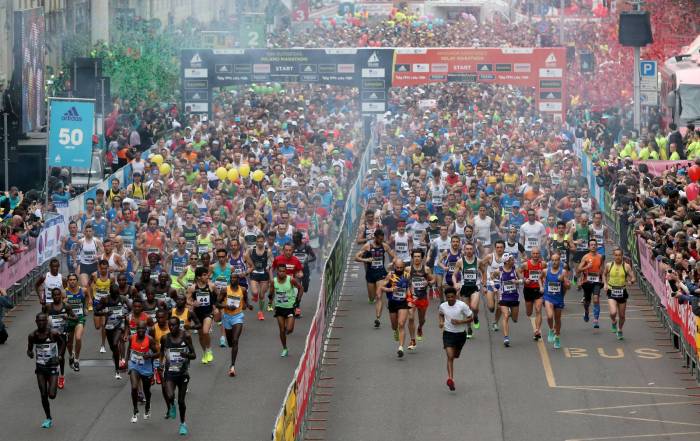
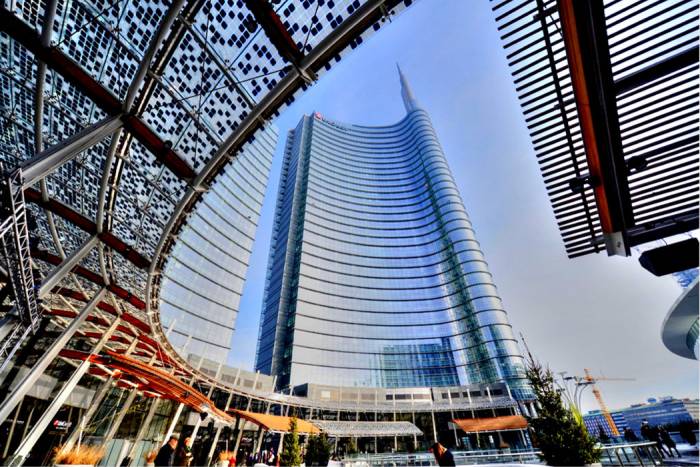
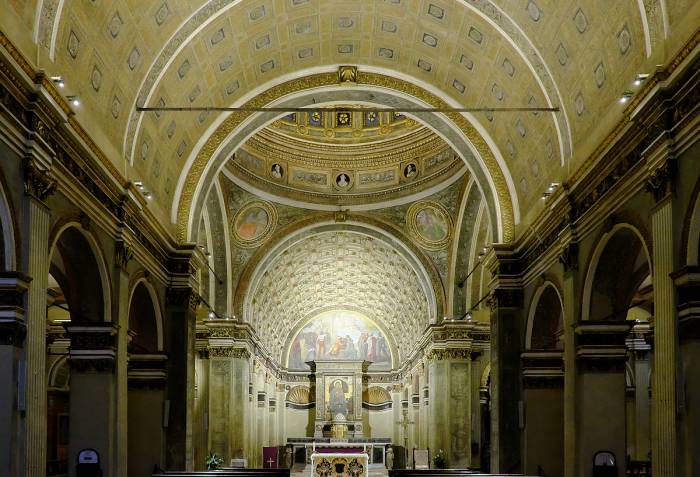
 Afternoon
Afternoon Evening
Evening

 If you’re eager to see movies hard to find anywhere else, find out what’s showing at the historic Cinema Mexico (Via Savona 57; www.cinemamexico.it). Or the little Cinema Centrale (www.multisalacentrale.it) on Via Torino, a multiplex with two screens, each auditorium being not much bigger than a sitting room. Or at the Cinema Beltrade (bandhi.it/bah/beltrade): almost in the outer city (but easily reached by tram or subway, Linea 1, get off at Pasteur). Completely independent, it goes in for quality films with rich and varied programmes and excellent documentaries. Die-hard movie fans should make a point of visiting Spazio Oberdan, the cinema of Milan’s film library (Piazza Oberdan; oberdan.cinetecamilano.it), with its themed screenings, or the interactive cinema museum (Viale Fulvio Testi 121, mic.cinetecanilano.it).
If you’re eager to see movies hard to find anywhere else, find out what’s showing at the historic Cinema Mexico (Via Savona 57; www.cinemamexico.it). Or the little Cinema Centrale (www.multisalacentrale.it) on Via Torino, a multiplex with two screens, each auditorium being not much bigger than a sitting room. Or at the Cinema Beltrade (bandhi.it/bah/beltrade): almost in the outer city (but easily reached by tram or subway, Linea 1, get off at Pasteur). Completely independent, it goes in for quality films with rich and varied programmes and excellent documentaries. Die-hard movie fans should make a point of visiting Spazio Oberdan, the cinema of Milan’s film library (Piazza Oberdan; oberdan.cinetecamilano.it), with its themed screenings, or the interactive cinema museum (Viale Fulvio Testi 121, mic.cinetecanilano.it). SUNDAY
SUNDAY
